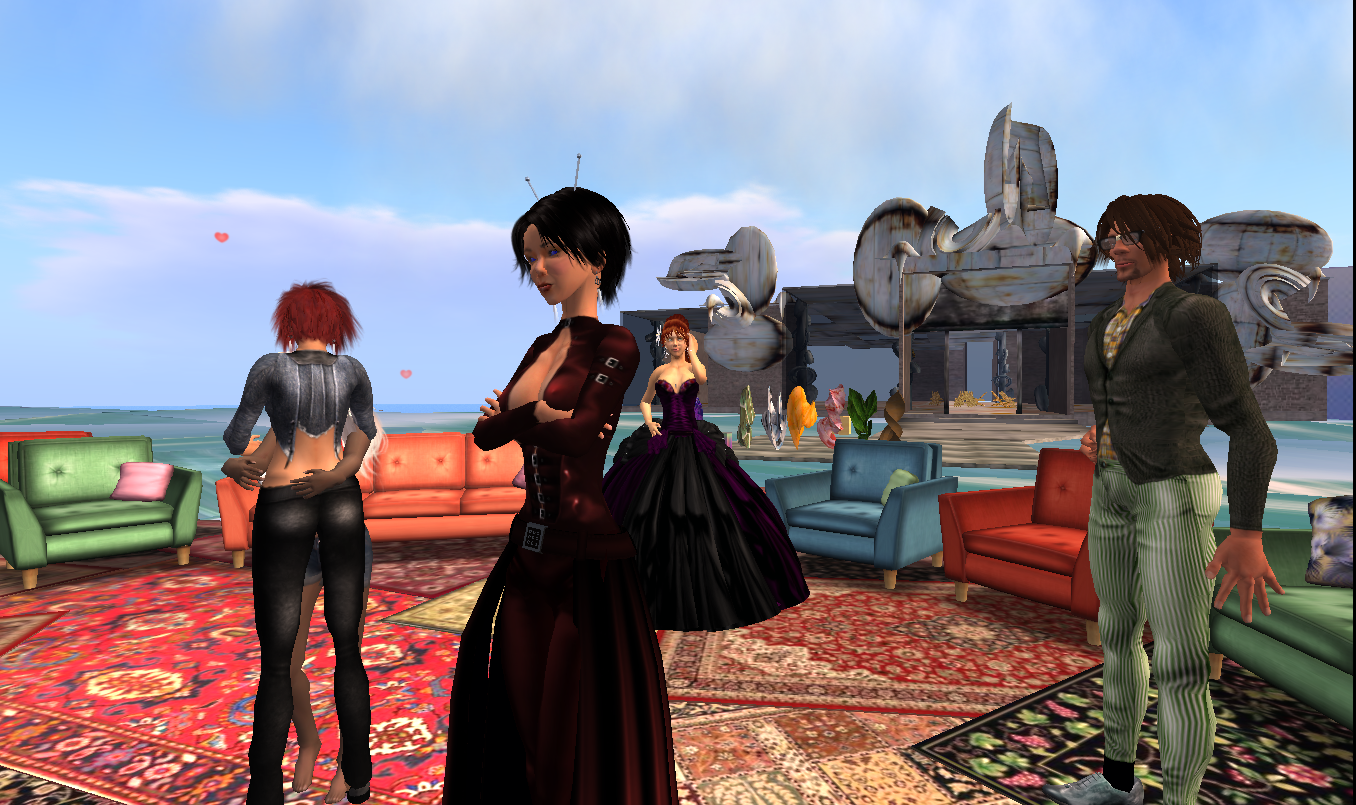 Now Extropia DaSilva has her own blog! This essay is republished with kind permission of Extie — Gwyn
Now Extropia DaSilva has her own blog! This essay is republished with kind permission of Extie — Gwyn
Remember that moment in ‘Goldilocks and the Three Bears’, when the bears are heading for home while Goldilocks is sleeping in baby bear’s bed? Small children find her behaviour rather strange, and an experiment involving a tube of sweets can help explain why. In this experiment, a child is offered a tube of sweets, only to find it actually contains something else. Plastic counters, perhaps. Next, the child is told that someone (who has not seen the tube before) is about to enter the room. The child is asked: What will the person expect to find in the tube of sweets? Small children say ‘plastic’, because they have not yet learned that other people’s knowledge of the world may be different to their own. This is also the reason why small children playing hide-and-seek sometimes stand in full view with their eyes closed. In their minds, they cannot see anything, so nobody else can see anything either! As for Goldilocks, the child knows that the three bears will soon enter the house, and they assume the little girl in the story must know this as well. So, why does she remain sound asleep, instead of running for her life?
GOLDILOCKS IS THE THREE BEARS.
In some ways, the child’s way of thinking is more accurate. This is because all characters in a story are usually the creation of one person (‘Goldilocks’ is actually an exception to this rule, because it was adapted from folktales and several authors added the elements that make up the story as we know it today). That being the case, each character in a story is an ‘alt’ of the author. Each one must therefore only be pretending not to know what the other characters are thinking or doing.
But, what is truly disturbing is the character of Goldilocks herself, and I am not referring to her disregard for other people’s private property. No, it is the fact that she is a little girl. We can be certain, though, that the person who created her was an adult. When you read the parts of that story that involves Goldilocks, her actions and what she is thinking, bare in mind that an adult had to imagine being that little girl. How else could a character be brought to life? This, then, is evidence of age play. Fortunately, the person who created Goldilocks was female, so at least we do not have to worry about reading a story to our kids that was penned by someone taunting us by pretending to be the someone of the opposite sex.
Ok, I know this is a ridiculous position to take. Nobody ever raised an issue over an author creating a character whose age and gender differed from their own. But, isn’t it odd how such concerns can be voiced over roleplay in virtual worlds? So, what is it about the creative medium of literature that makes Goldilocks a perfectly innocent creation, but an avatar designed to look like a little girl and roleplayed as one raises questions regarding what is/ is not acceptable?
DRAW ME A MAGIC CIRCLE.
It seems that when we read a story, the world and its inhabitants take precedence over the creative act. What I mean is this: While reading any book, you could imagine the author writing or typing the very sentence you are reading right now. You could picture him or her sat in front of a computer, research material at their side, occasionally gazing off into space in search of inspiration, and slowly shaping their manuscript into a proper story. But I bet you never do such a thing. Instead, what you see in your mind’s eye is the fictional world and its characters. You see a little girl, trying each bowl of porridge and deciding one is too hot, one too cold, and one just right.
In online worlds, though, there is a tendency to emphasise the real at the expense of the fantasy. If it were revealed that the person behind the avatar known as ‘Harry Potter’ was actually a woman called Joanne Rowling, a lot of people would insist on labelling ‘Harry’ as ‘she’. After all, ‘his’ gender is really female. And while we treat Ron Weasley, Hermione Granger and all the other characters as individuals who have knowledge, motives or feelings that differ from each other, in online worlds we would consider these alts to be the same person, and each must be treated as One.
How can we explain this difference? One thing to consider is the boundary between the fictional world and real life – what Johan Huizinga called the ‘Magic Circle’. With a fictional story, we draw a definite boundary separating the world and its inhabitants via the suspension of disbelief. We accept that, within the magic circle the author invited us into, bears live in houses and know how to cook porridge. And when the book is closed, the time has come to stop believing in bears that talk.
In the case of an online world, the boundary separating it from reality is much more indistinct. If I close a book, and let my mind concentrate on other matters, the world I was so engrossed in no longer exists. But, if I log off from SL, it does still exist, thanks to the thousands of people who remain logged-in. You could argue that someone, somewhere is probably always reading ‘Goldilocks’, so its world must exist in someone’s imagination at any given moment. But that is more like many copies of a world in which the same actions and consequences are repeated again and again. SL, on the other hand, has an open-ended narrative collaboratively constructed by its many participants. An avatar’s social network may also extend beyond SL itself. You could argue that someone logged-out of SL but still chatting with their friends on Gtalk, or posting an upcoming event on Facebook or responding to a blog post about something that happened inworld, is still an active participant.
There is no consensus regarding the boundary between real life and 2nd life. Each individual must decide for themselves what aspects of their real life should cross over into Second Life, and vice versa. Since the choices made by one person are almost certain to differ with those made by other people, we aught to expect conflicts to emerge from time to time. As we have seen, online worlds provide plenty of scope for multiplicity. People can and do create alternate characters with varying degrees of commonality or separation between each alt. In a world of indistinct boundaries and constructed identities, what is considered an act of infidelity, and what is not?




